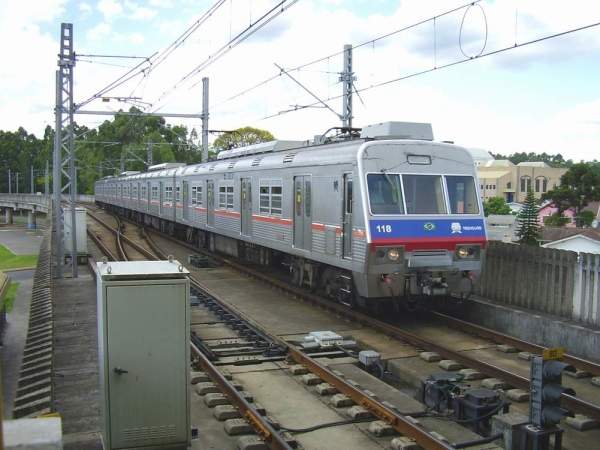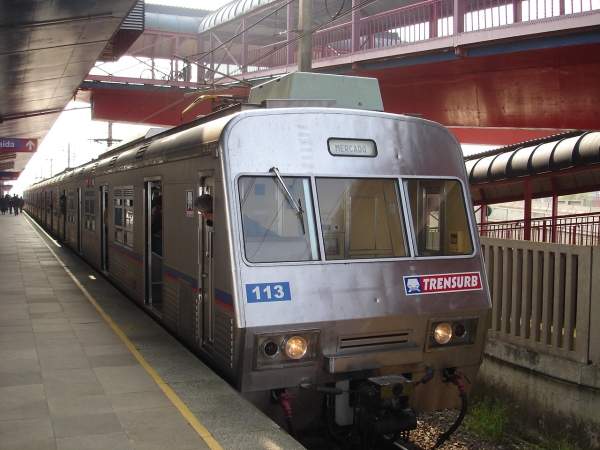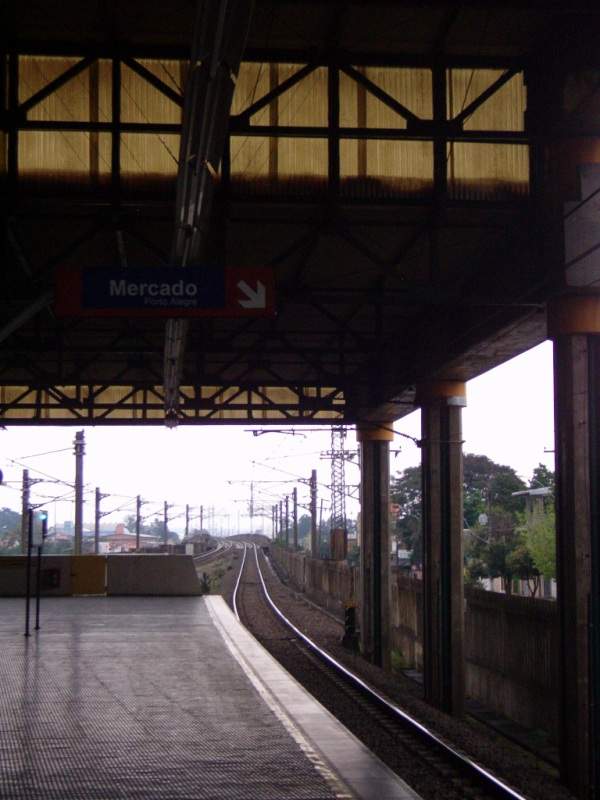Porto Alegre Metro, or Metro de Porto Alegre, is a bidirectional single-line subway in Porto Alegre, the capital and largest city in the state of Rio Grande do Sul, Brazil. The railway line connects Porto Alegre to the towns located in the north of the metropolitan area, such as Canoas, Esteio, Sapucaia do Sul and Sao Leopoldo.
The Porto Alegre Metro has been in commercial operation since March 1985, and carrying more than 170,000 commuters every day. The system has a length of 33.8km and serves 17 stations.
The subway is operated by Trensurb, a company owned jointly by the central government (99.21%), the state government of Rio Grande do Sul (0.61%) and the city of Porto Alegre (0.17%).
Metro de Porto Alegre subway background
The metro rail for Porto Alegre was conceived in 1976 by GEIPOT (Group Executive Integration of Transport Policies of the Brazilian Transportation Planning).
The studies conducted by GEIPOT showed that the new metro system will reduce the flow of vehicles on the BR-116 roadway and will allow commuters to travel for low costs at greater speed.
Work necessary for the implementation of the line, such as positioning of rails, sleepers, air mains and installation of signalling and communication equipment, were undertaken between 1980 and 1985.
The metro system was commissioned in March 1985 and commercial operations commenced two days later.
The subway was initially operated between Central Public Market and Sapucaia do Sul. It was extended to Unisinos in December 1997 and further 3.8km to the Sao Leopoldo Museum in November 2000.
Line routes and infrastructure of the Brazilian railway line
The 33.8km subway starts at the Central Public Market in Porto Alegre and ends at Sao Leopoldo Museum in Sao Leopoldo. This section is being further extended north to Novo Hamburgo.
The metro system comprises two bidirectional electrified lines. A 31.4km stretch of the section is totally barricaded and there is no level crossing. Another 2.4km is elevated. Track gauge is 1,600mm.
The average distance between each station is 2.1km. The platforms at each station are 190m in length and support the operations of two trains. Electricity is fed to the train by overhead lines of 3,000V of direct current.
Line one extension project
The Brazilian Government is undertaking various projects to revamp transport infrastructure in the country ahead of the 2014 FIFA World Cup. One of them is the extension of line one of the Porto Alegre Metro from Sao Leopoldo Museum to New Hamburg (Novo Hamburgo).
The project is budgeted at approximately $540m and involves installation of 9.3km of elevated tracks, four new stations, three in Novo Hamburgo and one in Sao Leopoldo, plus infrastructure for a future fifth station.
The project also involves redevelopment in the surroundings of the system.
Construction on the project commenced in 2009 and the new section of the line is scheduled to be operational in 2012. The new section is projected to attract 40,000 users.
The project is being undertaken by Construtora Norberto Odebrecht-led New Tram consortium consisting of Andrade Gutierrez, Toniolo Busnelo and T´TRANS.
Rolling stock and signalling on the Porto Alegre Metro
The Porto Alegre Metro is served by 25 electric multiple unit (EMU) trains, each comprising four cars. The stainless steel-made cars have an average carrying capacity of 1,081 passengers.
The trains were delivered by a Mitsui & Co. led Japanese consortium. The train cars were manufactured by Nippon Sharyo, Hitachi and Kawasaki Heavy Industries.
The subway’s signalling systems allow the movement of 20 train compositions an hour in each direction. Centralized traffic control (CTC) system, Cabsignal (CS), speed control of trains (SCT) and automatic stop of trains (AST) ensure safe movement of trains.
Movement of trains along the subway track is controlled by operations control center (OCC) through video monitors and synoptic panels.
Invensys Rail Dimetronic was contracted in June 2009 to supply signalling equipment for the 9.3km extension of the Port Alegre Metro.
Future of the bidirectional single-line subway
A second line has been planned to link the city centre of Porto Alegre to the towns in the east of the metropolitan area. A 19km line will be laid between Sarandi and Azenha. About 16km of the total line will be underground.










